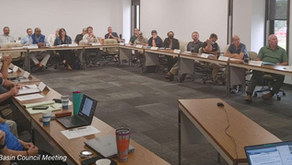Should Project Managers Rely on a Guesstimate?
- JD Solomon
- Oct 29, 2024
- 4 min read

The term “guesstimate” is an estimate made with a combination of guesswork and calculation. It’s an approximate calculation when you don’t have all the facts or precise data. Project managers find themselves needing to rely on guesstimates as projects move through implementation. Even more, project developers live on guesstimates in the conceptual development phase. The central question is whether there is a structured way to do a guesstimate.
Brief Examples
Guesstimate blend of the words “guess” and “estimate.”
As a project manager, you receive an estimate that site cleanup after a storm will take some time. When pressed, the contractor says, "About a week.”
A change order request includes a unique process controller. The equipment vendor tells the designer and contractor that the base equipment is available and easy to quote. However, the special controller is back-ordered due to a version update. When asked for a price, the vendor replies, “The supplier will not even quote it, but I would budget $10,000.”
Both are simple examples of guesstimates that project managers deal with every day. When developing an entire project, the magnitude of the guesstimate is bigger and contains a lot more uncertainty.
Measurement
Measurement is a process of assigning numbers to objects so that the unique relationships of the objects and the unique properties of the numbers themselves are reflected. Two fundamental measurement theories are representativeness, meaning that objects can actually be assigned to a number, and uniqueness, meaning that a number cannot be assigned to the same object by different measurers.
As project developers or managers, we would like to have a single scale of measurement for all of our variables. That's why we often try to reduce everything to a dollar or time value.
Quantitative versus Qualitative
Quantitative means of, relating to, or involving the measurement of quantity or amount. Think inches, feet, meters, pounds, or kilograms. Measurement theory applies to significant decimal places.
Qualitative means of, relating to, or involving quality or kind of things. Think beauty, fun, heat or cold, or color. We can often develop a scale, 1 to 5 or 1 to 10, to help describe the weight of evidence. The quality of some things is not easily measured with a unique scale.
As project developers or managers, we want all quantitative values to be developed from a singular scale. Unfortunately, that's usually not the case. Now, we are moving into the world of guesstimates.
Objective versus Subjective
Objective means expressing or dealing with facts or conditions as perceived without distortion by personal feelings, prejudices, or interpretations. Unless you are in a laboratory where input variables can be isolated, it is almost impossible for an estimate to be absent of personal feelings, prejudices, or interpretations.
The challenge is really how to make something less subjective.
We normally do this by adding some degree of quantification and scale.
Truncated (or trimmed) Mean: An Approach for Reliable Guesstimates
A truncated or trimmed mean is a statistical measure of central tendency, much like the mean and median. It involves the calculation of the mean after discarding given parts of a probability distribution or sample at the high and low end.
In practice, our resources are usually limited to 5 to 10 people providing their best guesses. We drop the lowest and highest values. Then, we average what's left.
A Structured Way to Do Guesstimates
In practice, guesstimates are improved by asking more than one party and sorting through a common value.
In the example of cleanup after a storm, a project manager would call five or six other contractors with similar experience or in the same situation. Throw out the low and high values. Average the rest of the values. Feel good about the guesstimate if the average is close to the contractor's estimate.
It’s a little harder with specialty parts and backorders, but the same process applies. Talk to five or six other people with the same experience, throw out the high and low estimates, average the rest, and decide whether to take the guesstimate.
On bigger issues like how long it takes to get something permitted, assemble a panel of subject matter experts and formally facilitate the process.
Should Project Managers Rely on a Guesstimate?
Project managers are forced to rely on guesstimates every day. There's nothing wrong with that. This brief article provides some insights and a method for making guesstimates better. Look for more on how calibration of the estimators and Monte Carlo simulations can improve guesstimates more if the context requires it. For now, project managers should do their best every day to improve the guesstimates we live by.
References
Wikipedia
"A Revisit of the Scales, Measurement Theory, and Statistical Analysis Controversy"
JD Solomon Inc. provides solutions for program development, asset management, and facilitation at the nexus of facilities, infrastructure, and the environment. Sign up for monthly updates related to our firm.
JD Solomon is the founder of JD Solomon, Inc., the creator of the FINESSE fishbone diagram®, and the co-creator of the SOAP criticality method©. He is the author of Communicating Reliability, Risk & Resiliency to Decision Makers: How to Get Your Boss’s Boss to Understand and Facilitating with FINESSE: A Guide to Successful Business Solutions.







Comments